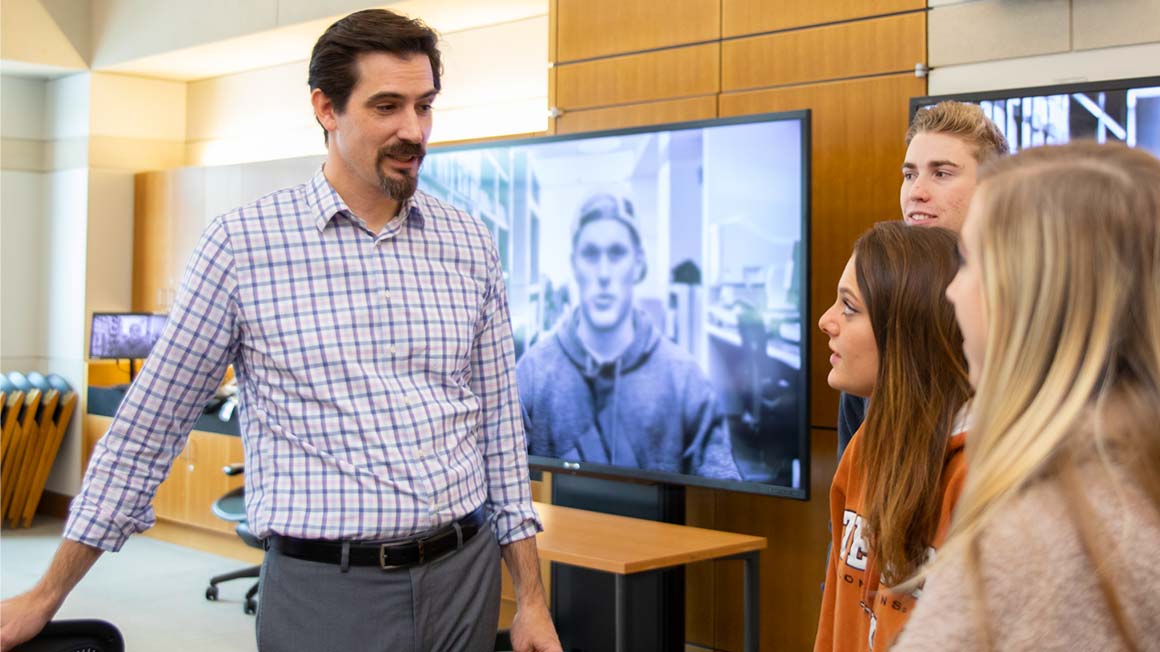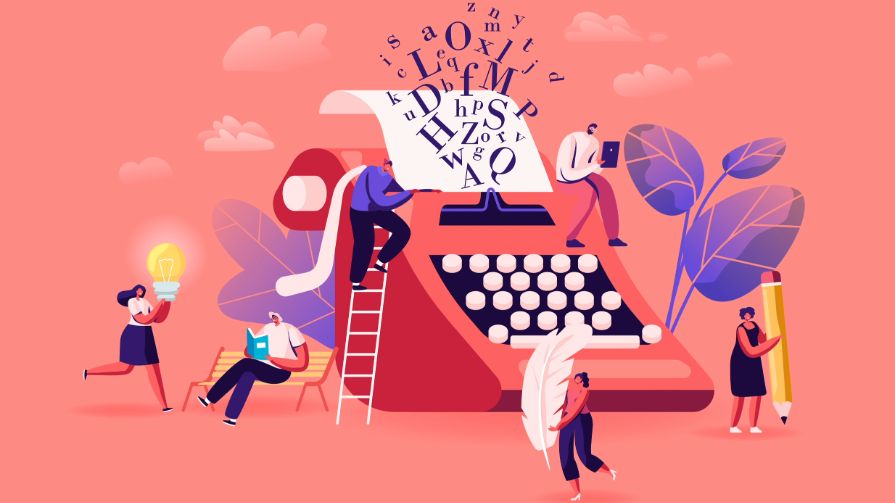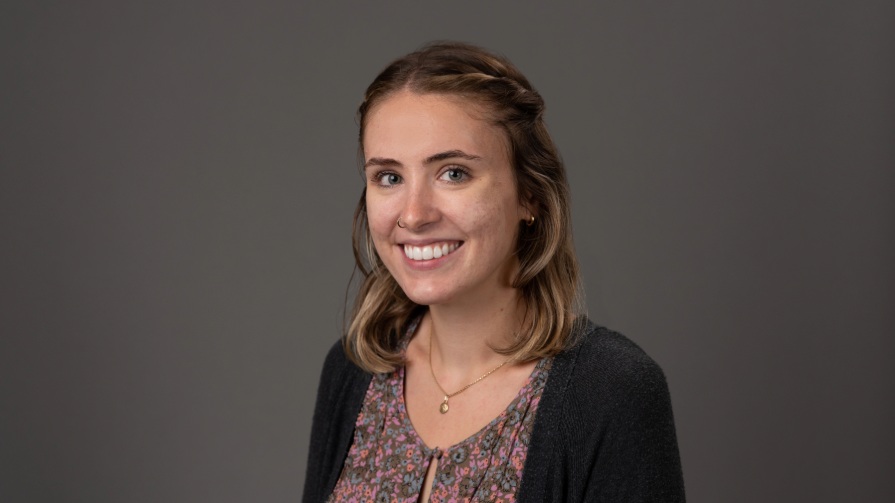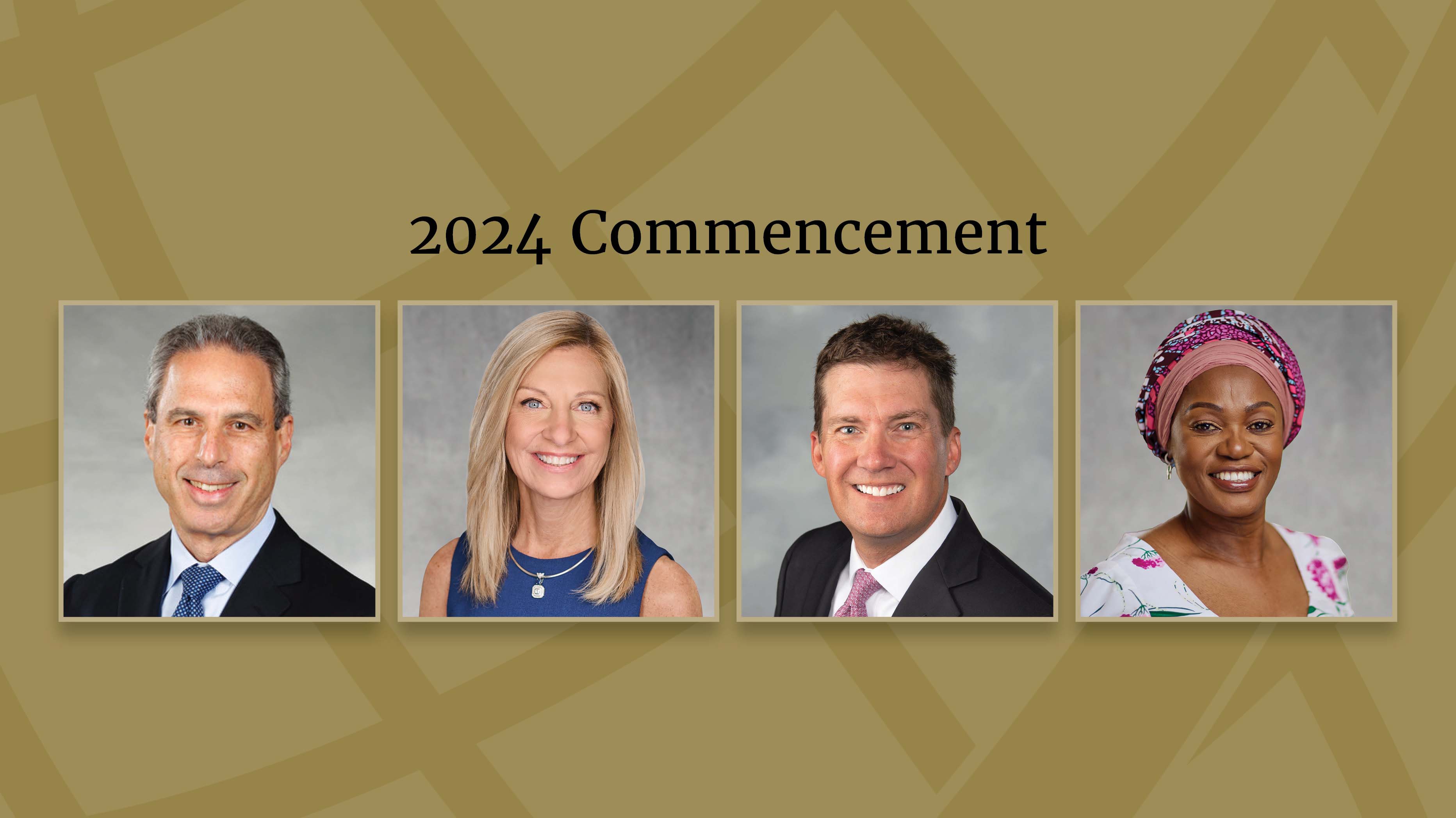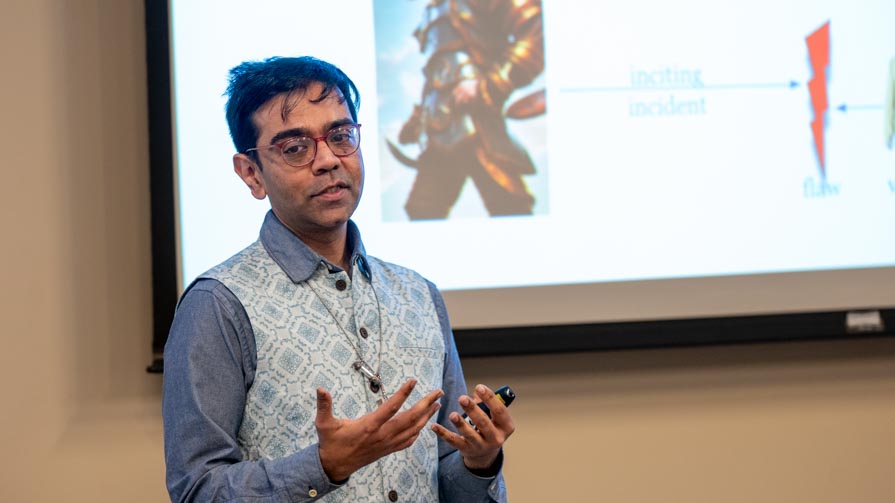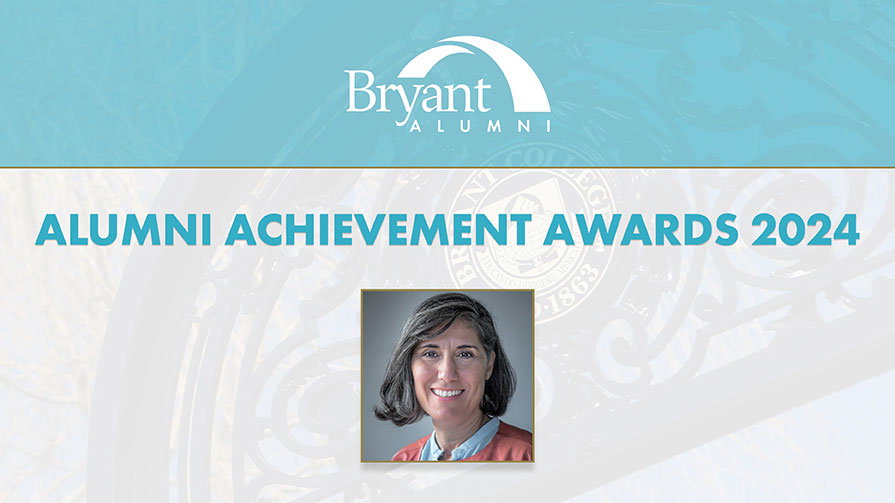“Discrimination and Inclusion,” a fieldwork museum created by students in the Fieldwork in Local Communities course, offered the Bryant community a unique and immersive look at bias and community on a college campus – Bryant's. Hosted at the University’s Douglas and Judith Krupp Library in the George E. Bello Center for Information and Technology, the exhibit showcased student research projects conducted using qualitative research methods, including photographs, videos, and posters.
"The course is meant to be a resource to help students think of how they can change the way they understand and interpret information," says Alex Perullo, Ph.D., Professor of Anthropology and Music and Director of Bryant’s Global Studies program. “That’s important because the better informed you are, the better decisions you make.”
The right questions and real answers
Through the class, students learn about qualitative research methods such as interviewing and participant observation, develop critical thinking and problem-solving abilities, hone their ability to analyze data, and consider the ethical issues related to their work.
“I’m much more comfortable conducting my own research now, and it gives you a whole new perspective on everything around you. It’s about figuring out how to form the right questions and get real answers.”
It’s an invaluable set of skills for student entering any number of fields. “This is a course with a wide reach,” says Perullo. “No matter your background, you're going to get something out of this that you can use and apply after you graduate.”
“There’s so much I’ve taken away from this course,” agrees Marketing major Brandon Desjardin ’21. “I’m much more comfortable conducting my own research now, and it gives you a whole new perspective on everything around you. It’s about figuring out how to form the right questions and get real answers.”
For Yuliandra Henriquez ’19, now a Human Resources Development Program participant at Travelers, the skills she acquired from the course are now an important asset. “The class was amazing,” she says. “I learned so much about research, communities, and culture. It also teaches you how to observe, which is something you don’t always realize is as important as it is.”
“This is what I can do”
But it’s not enough to just learn new concepts, says Perullo; you have to be able to use them. “The course asks, can you take these research methods you’ve learned, actually apply them to something and turn it into something meaningful?”
“At first we were nervous. ... But part of this class is about showing yourself, ‘this is what I can do.'"
That means going into the world and gaining first-hand experience through interviewing, observing, and evaluating the data. “You get a very hands-on experience with this class,” says Team and Project Management major Olivia Sampson ’21. “You’re not just writing a paper or reflecting on what you’ve studied. You’re actually doing it.”
The experience they gain complements lessons from other classes as well, explains Data Science major Kylee LaCreta ’21. “I’ve done research with databases and in other ways but actually being out in the field and figuring out what questions to ask and how to adjust in the moment was such a different experience and a different skill to learn,” she says. “I know that will help me with my other Data Science projects in the future.”
It also teaches confidence. “At first we were nervous, because none of us has ever done anything like this,” says Marketing student Sophia Soares ’21. “But part of this class is about showing yourself, ‘this is what I can do.'”
“Beyond the skills you learn, this class helps you build a better moral compass. I think that’s pretty important for everyone.”
Building a better moral compass
The students honed their skills by studying discrimination on a college campus. Through literature reviews, interviews, archival research, data analysis, and other research methods, they developed projects that explore issues of bias, as well as potential responses to them.
“Our projects used so many of the different techniques we’ve learned: asking the right questions, conducting interviews, getting information and then figuring out what it means,” says Soares. “It also really helps you get out of your comfort zone: you have to ask questions, even uncomfortable ones, that you might not normally ask people, and talk to people you might not normally talk to on a day-to-day basis.”
“We think of Bryant as one big community, but it’s also made up of many smaller communities. It’s important that we understand that and develop as full an understanding of everyone as possible.”
It also aids the students in developing their ability to empathize with others. “It’s helped me understand other people’s experience better, and how to tell their story to other people,” says Finance and Applied Analytics major Justin Kennedy ’21.
“Beyond the skills you pick up, this class helps you build a better moral compass,” Jake Friedman ’21, a Psychology and Management major, adds. “I think that’s pretty important for everyone.”
“I hope that people leave the exhibit thinking that Bryant is such a diverse and dynamic community and that, although there are challenges, we are always taking steps to make it stronger.”
A larger discussion
For their final project, the students created videos of Bryant community members sharing their experiences with discrimination and inclusion, which were showcased in the “Discrimination and Inclusion” exhibition. Designed to spark a wider discussion of discrimination on campus, it also featured posters discussing research, interactive exercises in empathy, a gallery of 40 portraits highlighting members of the Bryant community and the insight they bring to campus, and resources for promoting diversity and inclusion.
“We think of Bryant as one big community, but it’s also made up of many smaller communities,” notes Leadership and Innovation major Isabel Purdum ’20. “It’s important that we understand that and develop as full an understanding of everyone as possible.
“I hope that people leave the exhibit thinking that Bryant is such a diverse and dynamic community and that, although there are challenges, we are always taking steps to make it stronger,” says Purdum.
